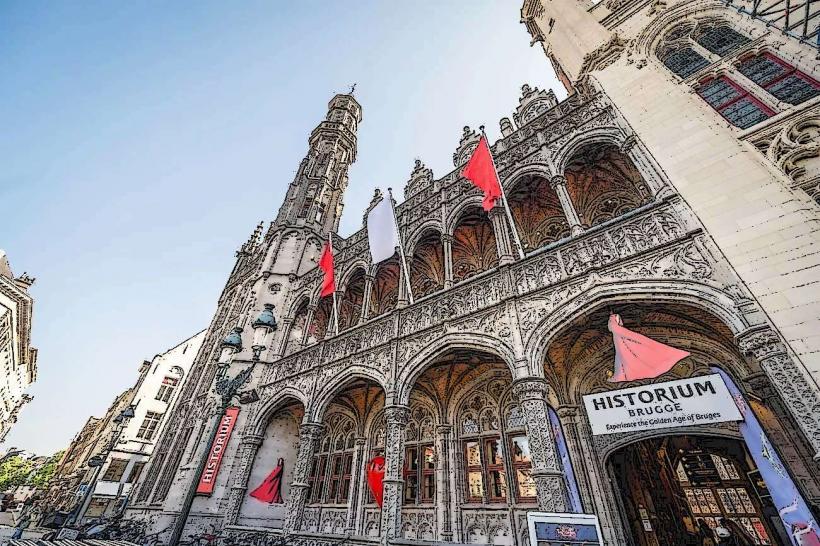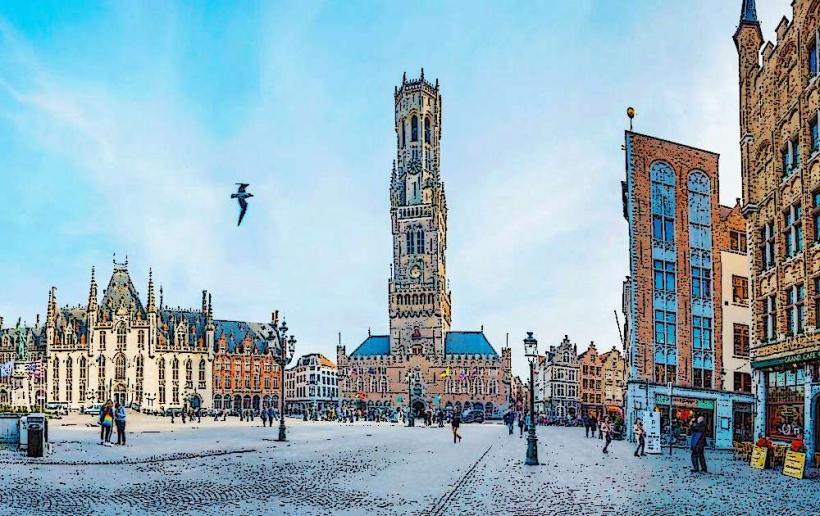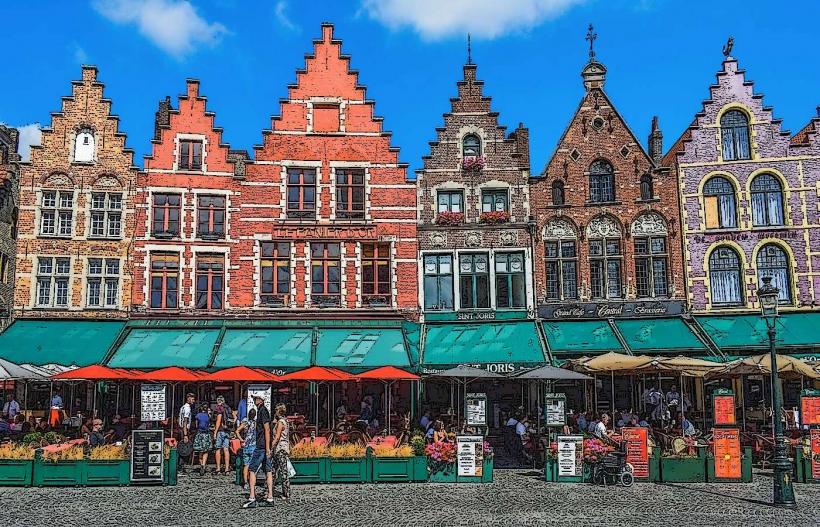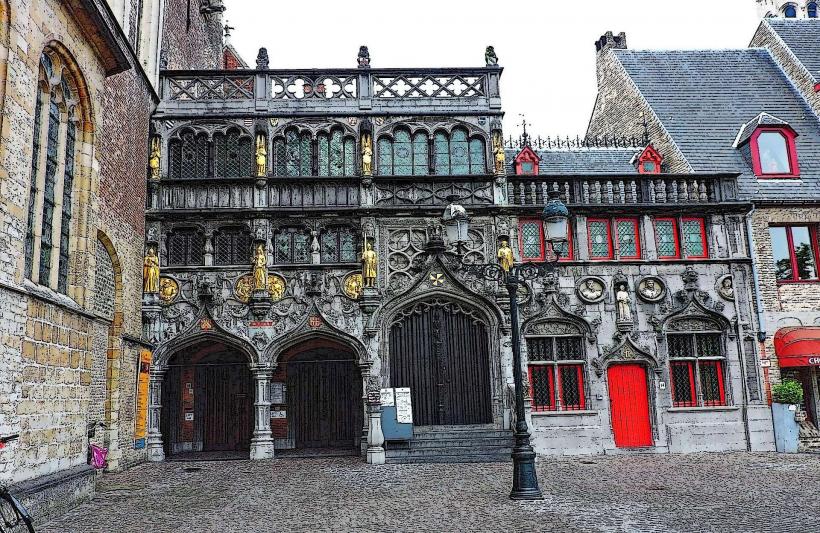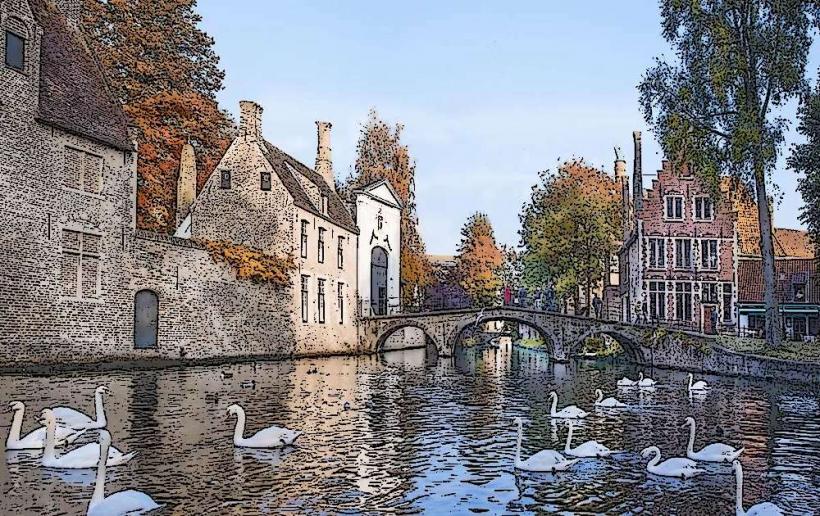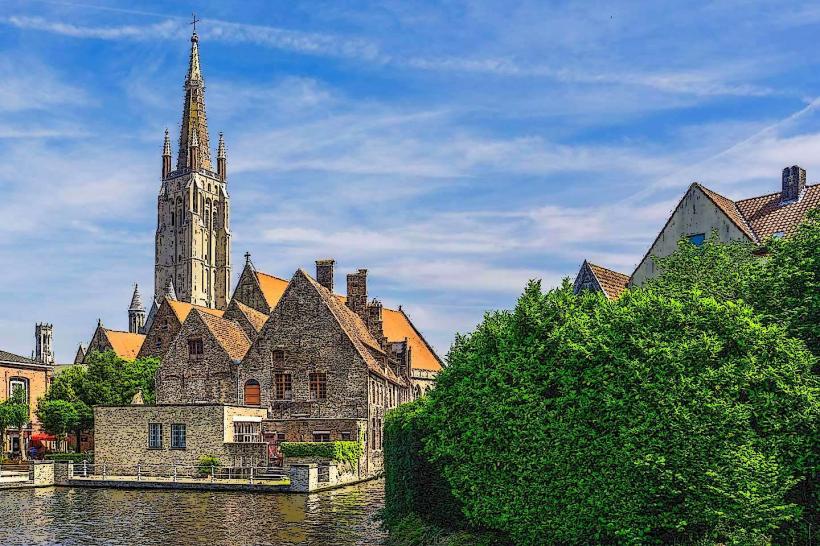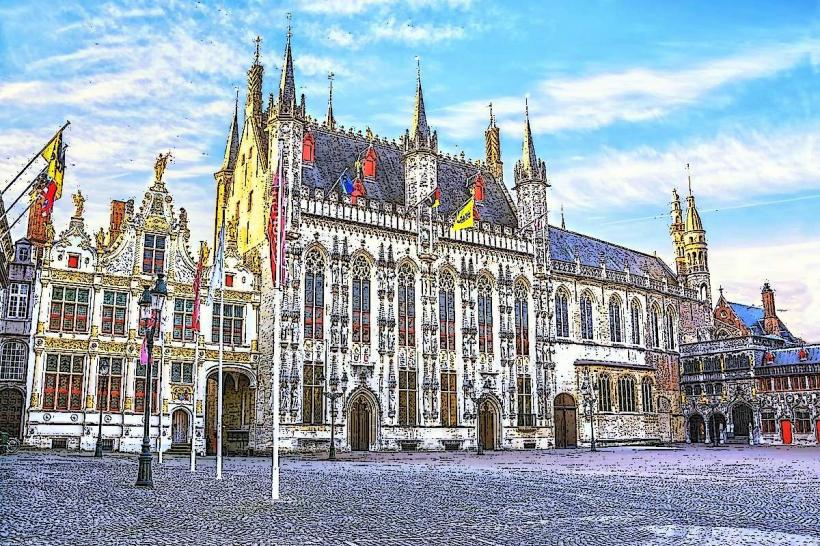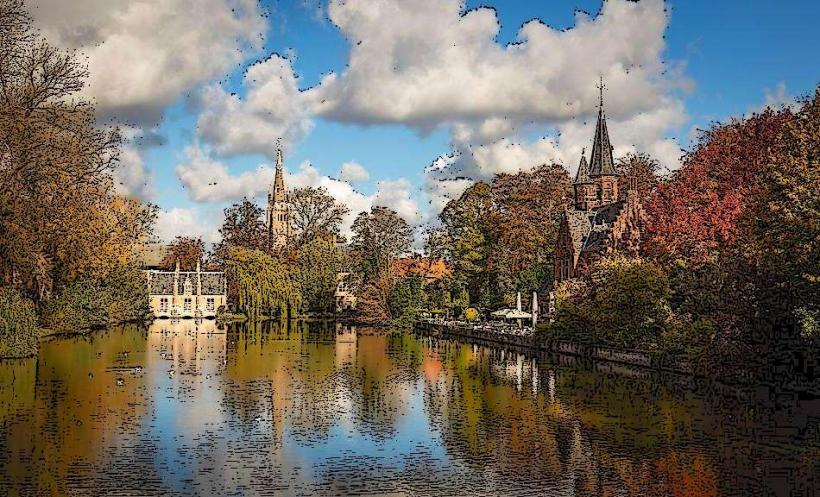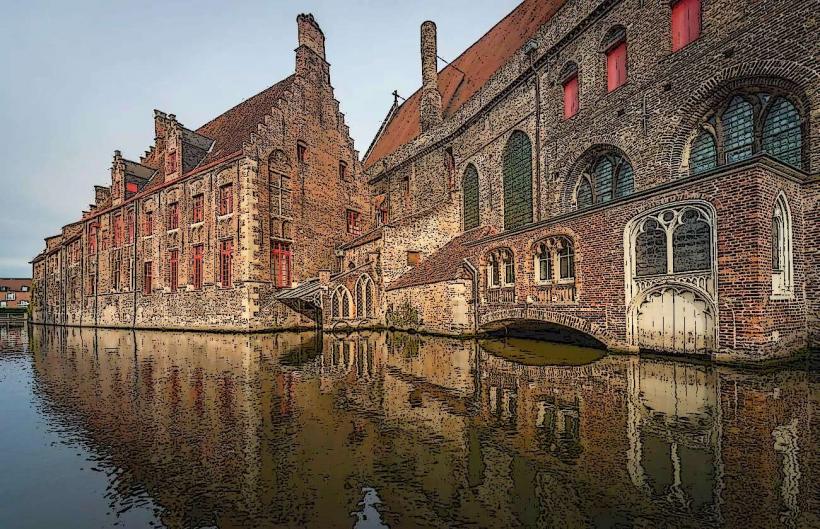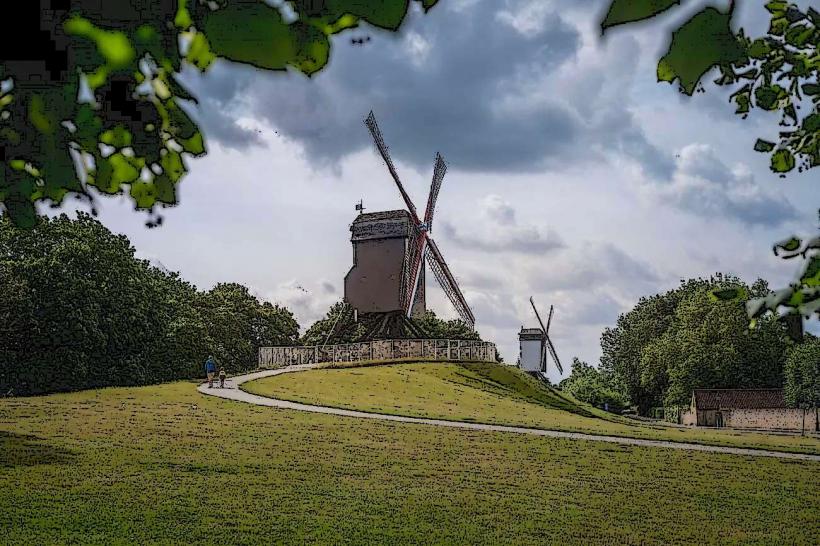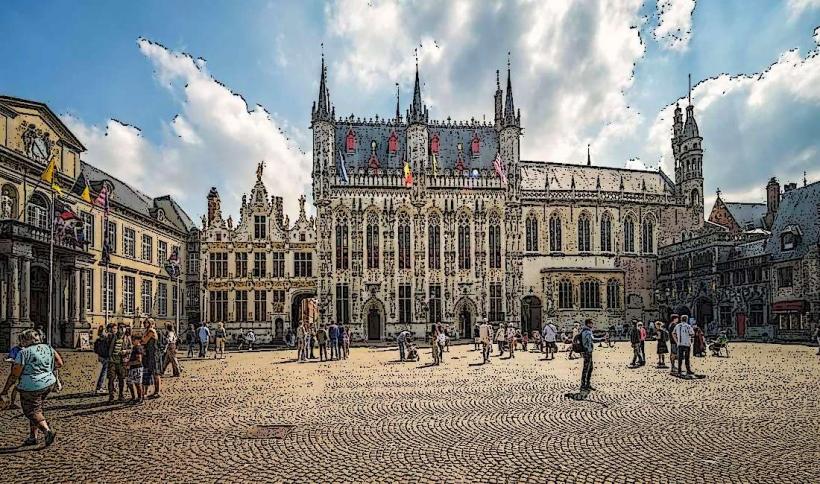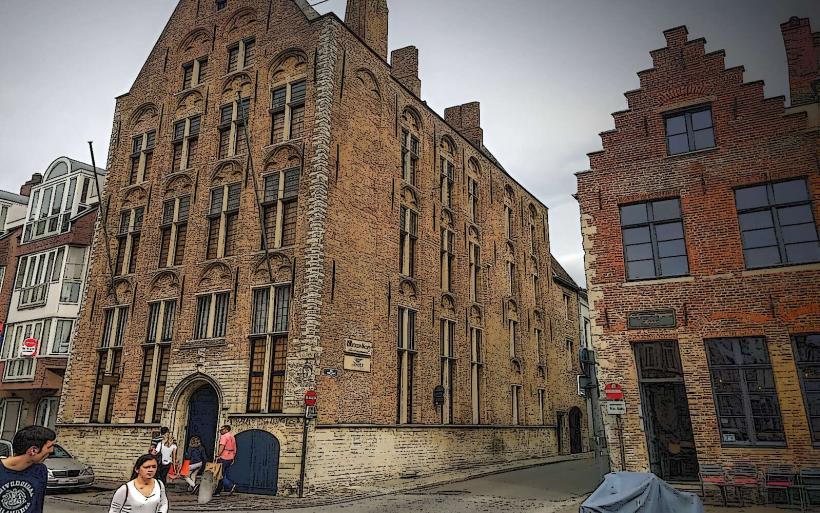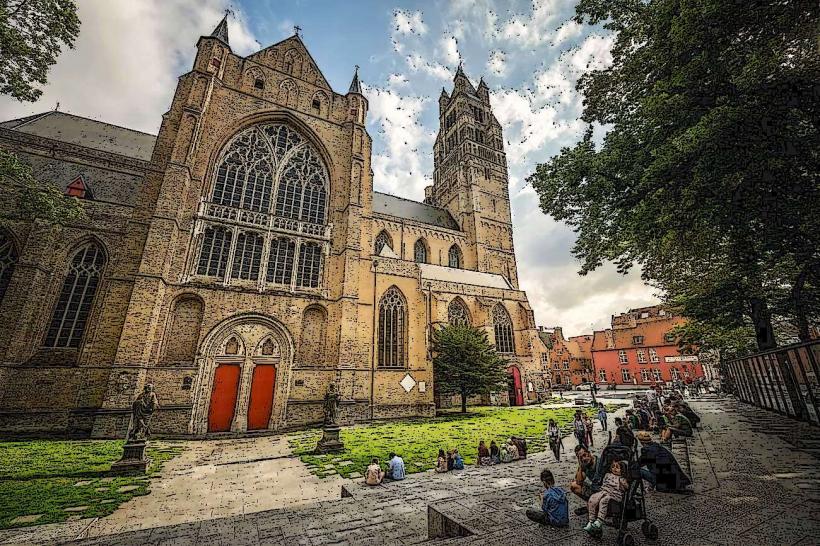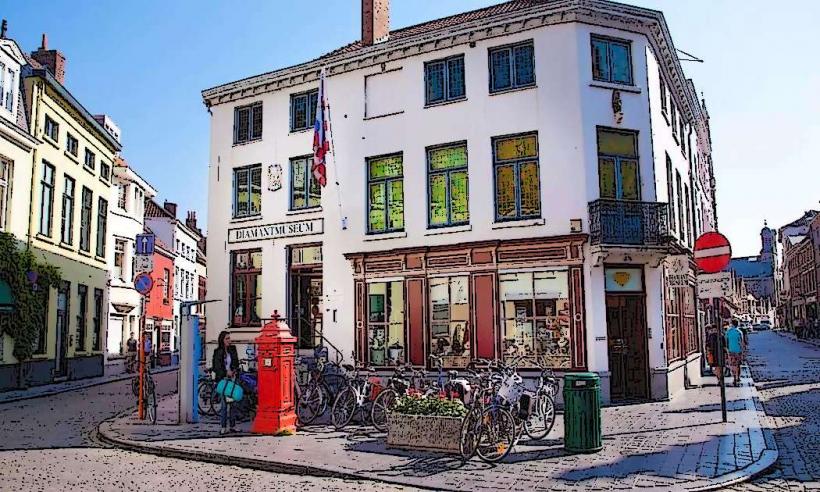Information
Landmark: GroeningemuseumCity: Bruges
Country: Belgium
Continent: Europe
The Groeningemuseum is one of Bruges' premier art museums, housing an extensive collection of Flemish and Belgian art from the Middle Ages through to the 20th century. It is renowned for its exceptional collection of works from the Flemish Primitives and other renowned artists. The museum offers visitors a deep dive into the rich history of Bruges and the surrounding Flemish region through a carefully curated collection of paintings, sculptures, and historical artifacts.
History and Significance
Foundation and Origins: The museum was founded in 1799 and is housed in a historical building near the Gruuthuse Palace. It has been continuously expanded and renovated to accommodate its growing collection. The Groeningemuseum became a public museum in the early 19th century, and it has since gained recognition for its collection of Flemish art, particularly from the 15th to the 18th centuries.
Artistic and Cultural Importance: The Groeningemuseum is an essential institution for the study of Flemish art history, as it preserves and displays significant works from the Flemish Primitives, including iconic pieces from Jan van Eyck, Hans Memling, and Rogier van der Weyden. The museum is dedicated to showcasing the history of Bruges as a major artistic and cultural center during the Medieval and Renaissance periods.
Key Features and Highlights
Flemish Primitives:
- The Groeningemuseum is particularly famous for its collection of Flemish Primitive paintings, which were created by 15th-century Flemish artists. These works are noted for their incredible attention to detail, realism, and innovative use of oil painting.
- Key pieces include:
- The Virgin and Child with Saints by Hans Memling.
- The Adoration of the Mystic Lamb by Jan van Eyck (a portion of the famous Ghent Altarpiece).
- The Last Judgment by Rogier van der Weyden.
Renaissance and Baroque Art:
- The museum also has an important collection of Renaissance and Baroque paintings, reflecting the development of art in Flanders following the Medieval period.
- Artists such as Jeremias de Decker, Pieter de Hooch, and Adriaen Brouwer are featured in the museum's collection, representing the vibrant and diverse artistic movements of the 16th and 17th centuries.
19th and 20th Century Art:
- The Groeningemuseum continues to highlight more modern art as well. The museum has works by 19th and 20th-century artists, showcasing the evolution of Belgian art through the Impressionist, Symbolist, and Expressionist movements. Artists like James Ensor and Gustave De Smet are featured in this section of the museum.
Famous Artists Represented:
- In addition to the Flemish Primitives, the museum displays works by several notable Flemish and Belgian artists, such as:
- Jan van Eyck: Renowned for his oil painting techniques and detailed depictions of everyday life.
- Hans Memling: Known for his religious and portrait works, his early Netherlandish style is captured in paintings like The Last Judgment.
- Rogier van der Weyden: Recognized for his emotional depth and dramatic use of color in works like the Descent from the Cross.
- Gustave De Smet: A 20th-century artist known for his expressionistic landscapes and portraits.
Temporary Exhibitions:
- In addition to its permanent collection, the Groeningemuseum regularly hosts temporary exhibitions that highlight specific artists, art movements, or themes within the context of Belgian and European art. These exhibitions are often innovative and attract international attention.
Interior and Architecture:
- The Groeningemuseum is located in a historic building, which originally belonged to the Gruuthuse family, wealthy patrons of the arts during the 15th century. The museum’s architecture is a blend of medieval and modern styles, making it a visually pleasing space for viewing art.
- The museum's galleries are arranged in a way that creates a narrative journey through the history of Flemish art, guiding visitors from the early days of painting through to contemporary expressions.
Museum's Courtyard and Garden:
- The museum also features a charming courtyard and garden, which offer visitors a peaceful place to relax after exploring the galleries. The garden is especially pleasant during the warmer months, with views of the surrounding historical buildings and a tranquil atmosphere.
Visitor Experience
Visiting the Groeningemuseum: The museum is a major cultural attraction in Bruges, and it draws art lovers and tourists from around the world. With its diverse collection, it offers a comprehensive experience for those interested in art history, Flemish painting, and the evolution of European art.
Opening Hours: The museum is typically open from 9:30 AM to 5:00 PM, with extended hours on certain days. It's advisable to check the museum’s website for the most up-to-date hours and any special closings or events.
Admission: There is an admission fee to visit the Groeningemuseum, and tickets can often be purchased at the entrance or online. Discounts are available for students, seniors, and groups.
Atmosphere: The atmosphere inside the Groeningemuseum is one of quiet contemplation. The galleries are spacious and well-lit, providing a perfect setting for appreciating the fine details and historical importance of the works on display. The museum is usually not overly crowded, allowing for a relaxed experience of the art.
Nearby Attractions
The Groeningemuseum is located in the historic center of Bruges, making it easy to combine a visit with other attractions, such as:
- Belfry of Bruges: A medieval bell tower located nearby, offering panoramic views of the city.
- Market Square (Markt): The central square of Bruges, home to historic buildings, cafes, and shops.
- Church of Our Lady: A short walk away, this church houses the famous Michelangelo Madonna and Child statue.
- Gruuthuse Museum: Housed in the adjacent Gruuthuse Palace, this museum offers a look into Bruges’ medieval history and life during the Burgundian era.
Conclusion
The Groeningemuseum is an essential destination for art lovers visiting Bruges, offering an in-depth look at the rich artistic heritage of the Flemish region. From the Flemish Primitives to modern Belgian art, the museum presents a comprehensive narrative of Flemish painting and its evolution over centuries. Whether you're fascinated by medieval religious art, Renaissance masterpieces, or contemporary expressions, the Groeningemuseum provides a wealth of cultural history in a stunning setting. It is a perfect complement to a visit to Bruges, one of Europe’s most beautiful and historically significant cities.

